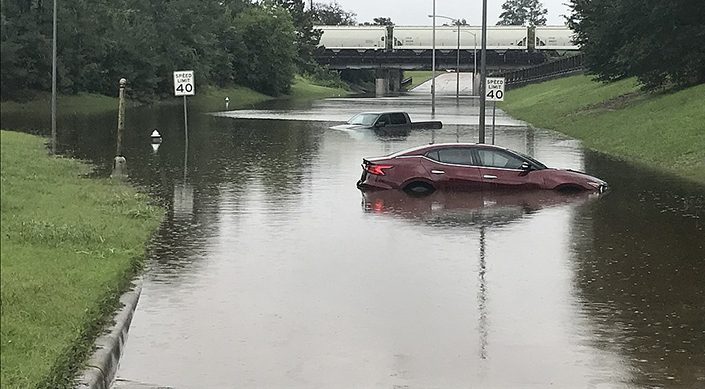Disaster resilience: How can cities improve planning and infrastructure?

Image: Wikimedia Commons
An interdisciplinary team of Texas A&M University researchers will study ways to improve a community’s ability to recover from disasters like Hurricane Harvey by improving hazard mitigation planning and infrastructure development.
The National Science Foundation is funding the study, which will be led by Ali Mostafavi, assistant professor in the Department of Civil Engineering, College of Engineering. The team will include Arnold Vedlitz, professor and holder of the Bob Bullock Chair in Government and Public Policy at the Bush School of Government and Public Service, and Bryce Hannibal, an assistant research scientist at the Bush School’s Institute for Science, Technology and Public Policy.
The grant also funds researchers from the Department of Computer Science and Engineering in the College of Engineering, the Department of Landscape Architecture in the College of Agriculture and Urban Planning, and the Public Policy Research Institute in the College of Liberal Arts.
Elements of the study will look at how the risks and vulnerabilities resulting from the interconnections among flood protection infrastructure, emergency response planning and transportation systems affected the communities in the Houston area following Hurricane Harvey.
In August 2017, Houston suffered catastrophic flooding from Hurricane Harvey. The study will look at the vulnerabilities in infrastructure and planning that the disaster revealed.
Vedlitz and Hannibal will help conduct a survey of key agencies and stakeholders involved with various aspects of risk mitigation planning and response pertaining to infrastructure systems. The goal is to identify and assess the degree of coordination, conflict, and gaps in current planning efforts and response actions, since these elements may affect the infrastructure design and emergency processes for dealing with extreme events.
They will use the survey data to model how inter-organizational dynamics and decision-making processes in human systems affect the management of interdependent flood protection, emergency response, and transportation infrastructure systems.
“We believe that our findings will help policymakers and stakeholders address the issues arising from interdependent response and recovery efforts so their communities can be more resilient to extreme weather events,” Vedlitz said.

